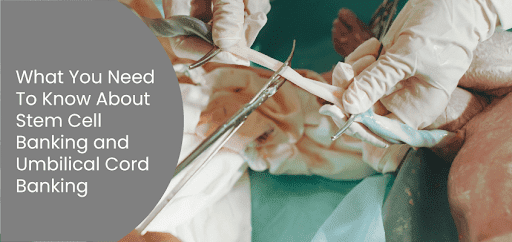Introduction
The future has been and continues to be an enigma for every life on earth. Though humans have tried their best to learn and know their lot, it hasn’t been successful. However, with scientific progress like stem cells and umbilical cord banking, we can at least hope to secure our children’s children’s protection from life-threatening diseases if they occur. It’s ok. If you don’t know the nearest stem cell bank, you need to know about the process and why it’s essential!
Our Wellness Programs
What is stem cell Blood Banking: Everything You Need to Know
A newborn’s umbilical cord and placenta contain cord blood. Though babies do not need this blood after their birth, it contains life-saving stem cells that can come to their rescue if they get sick in the future.
Cord blood banking is an effortless procedure during which the blood from the umbilical cord and placenta is collected, processed, frozen or banked for later use. When banked properly, cord blood can remain viable for over 20 years.
Two primary options for cord blood banking are public and private banks. Both these options have their benefits and limitations. Evaluate what suits your requirements before opting for one.
However, cord blood comprises all standard components, like red blood cells, white blood cells, platelets, plasma, and highly regenerative stem cells.
Stem cells are usually found in the bone marrow and have the potential to develop or differentiate into specialised cells, including cells of the immune system. If a child or a family member develops a disease, these stem cells can replace the diseased cells and restore the healthy functioning of the individual’s body.
Looking for services related to this subject? Get in touch with these experts today!!
Experts

Banani Das Dhar

India
Wellness Expert
Experience: 7 years

Devika Gupta

India
Wellness Expert
Experience: 4 years

Trupti Rakesh valotia

India
Wellness Expert
Experience: 3 years

Sarvjeet Kumar Yadav

India
Wellness Expert
Experience: 15 years

Shubham Baliyan

India
Wellness Expert
Experience: 2 years
How Does stem cell Blood Banking Work?
If you and your partner decide to bank your newborn’s cord blood after their birth, you must inform your doctor and the cord banking team well in advance. Ideally, you should arrange for cord blood banking before the 34th week of pregnancy. It is essential because your cord blood banking team will be ready to collect the placenta as soon as you deliver. In most cases, the doctor and healthcare team sends you the cord blood collection to your doctor and healthcare team.
After birth, the umbilical cord of the baby is cut and clamped. Doctors then use the blood from this line to immediately draw blood for storage in the bag. It is a quick process and can take about 8 to 10 minutes. The collected cord blood is then transported to the cord blood bank as per protocol.
All About Stem Cell Banking
Stem cells are cells in our body with the unique property of transforming into specialised cells, such as muscle cells, brain cells, bone cells, and blood cells. For this reason, stem cells are the building blocks of our body. Stem cells are present in specific body parts, such as the umbilical cord, teeth, and bone marrow.
Stem cell banking is the process of retrieving these stem cells, processing them, and storing them for future use. It is natural to wonder, “Why should we save these stem cells?”. Factors like illness or injury can damage some body parts or affect their function. Stem cells can regenerate, repair damaged and disease tissue, and restore normal body functioning.
Now stem cell banks use low temperatures to preserve these stem cells and protect them from contamination or degeneration. They help keep them viable for use in the future in the event of a disease. Stem cell banking uses standardised and quality-controlled procedures to avoid losing its properties.
The most commonly retrieved stem cells are from a newborn baby’s umbilical cord at birth. Stem cell banking is an effective way to secure a child’s and family’s future health.
Ten things You Do Not Know About Stem Cell Storage.
The first umbilical cord blood banking took place in the 1980s. Here are ten facts you probably didn’t know about this process:

1. Stem cell storage has no expiration date.
Though research states stem cells can stay viable for use for 23 years, there is no conclusive proof. When stored well, most stem cells banked have no expiration date.
2. Differently preservation of Cord blood and cord tissue
Whether you wish to save your newborn’s cord blood or tissue, they are processed and frozen separately.
3. Stem cells are frozen up to -120 deg C
Initially, stem cells are frozen at 1-2 deg/minute up to a temperature of -40 deg C. The tissues are frozen faster at 3-5 deg/minute to -120 degrees Celsius in the next freezing phase.
4. Stem cell storage is not expensive.
However, most people can afford stem cell storage since it is not an expensive affair. You must pay a one-time fee when depositing the tissues. Some private banks may have yearly expenses that are more small amounts. Stem cell storage is more than value for money compared to their advantages.
5. You cannot store stem cells at home.
Stem cell banking requires a specialised process, it is impossible at home.
6. Stored stem cells can help treat several diseases.
Existing research states that banked stem cells can help treat over 80 diseases.
7. Inform your gynaecologist well in advance
If you plan to bank your baby’s stem cells, inform your doctor and stem cell storage team before 28 and 34 weeks of your gestation to enable preparation.
8. Doctors recommend private cord blood banking when a family member has a medical condition.
If a family member has a medical condition (malignant or genetic), stem cell banking could help them via cord blood transplantation.
9. Collected units of umbilical cord blood should adhere to set standards
Stem cell banking must meet the quality and safety standards of donor screening and testing for infectious diseases as outlined by the appropriate organisation that governs these processes.
10. Your baby may not be able to use its stem cells.
Your baby may be able to use their cord blood to treat non-genetic diseases and cancers. But, if they are born with genetic disorders, their stem cells cannot be transplanted into them, as they are more likely to have the same congenital disability.
Conclusion
Stem cell and umbilical cord banking are increasingly popular with parents who wish to secure their child’s future health. So it may also be because doctors use stem cells to treat cancers, including lymphoma, leukaemia, genetic disorders, and immune and metabolic conditions. Stem cells can potentially treat over 80 diseases, including the ability to differentiate into blood cells.
However, there is plenty of research about the benefits of banking your child’s stem cells or cord blood. So regardless of where you live, evaluate the various public and private stem cell or cord blood banks to take your pick. Then if you decide to go ahead with stem cell banking, discuss it with your doctor and your bank to ensure everything is in place well before your due date. Now, remember that a few birth conditions such as preterm deliveries, delivery of more than one baby, or babies with genetic conditions at birth are not candidates for cord blood banking.
If you are unsure about any step in securing your child’s future health, reach out to our experts at United We Care!















